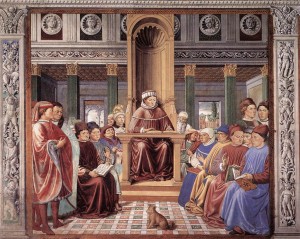 This is a project that has been in the works a long time, and so I’m very happy to announce that Beyond Dordt and De Auxiliis: The Dynamics of Protestant and Catholic Soteriology in the Sixteenth and Seventeenth Centuries will be appearing in the Studies in the History of Christian Traditions series, published by Brill.
This is a project that has been in the works a long time, and so I’m very happy to announce that Beyond Dordt and De Auxiliis: The Dynamics of Protestant and Catholic Soteriology in the Sixteenth and Seventeenth Centuries will be appearing in the Studies in the History of Christian Traditions series, published by Brill.
I had the distinct honor of co-editing this volume along with David S. Sytsma, research curator at the Junius Institute, as well Matthew T. Gaetano, associate professor of history at Hillsdale College. The origin of the project was conversations some years ago concerning intriguing cross-confessional dialogue among and between the Reformed, Dominicans, Arminians, and Jesuits in the early modern era, particularly over issues related to predestination and free choice.
Here’s more detail about this volume:
Beyond Dordt and De Auxiliis explores post-Reformation inter-confessional theological exchange on soteriological topics including predestination, grace, and free choice. These doctrines remained controversial within confessional traditions after the Reformation, as Dominicans and Jesuits and later Calvinists and Arminians argued about these critical issues in the Augustinian theological heritage. Some of those involved in condemning Arminianism at the Synod of Dordt (1618-1619) were inspired by Dominican followers of Thomas Aquinas in Spain who had recently opposed the vigorous defense of free choice by Jesuit Molinists in the Congregatio de auxiliis (1598-1607). This volume, appearing on the 400th anniversary of the closing of the Synod of Dordt, brings together a group of scholars working in fields that only rarely speak to one another to address these theological debates that cross geographical and confessional boundaries.
More details will be forthcoming as the volume progresses through the publishing process. But in the meantime, I have posted a document including the table of contents, list of contributors (including JI senior fellow Richard A. Muller), and a draft of the substantive introduction to the volume.
